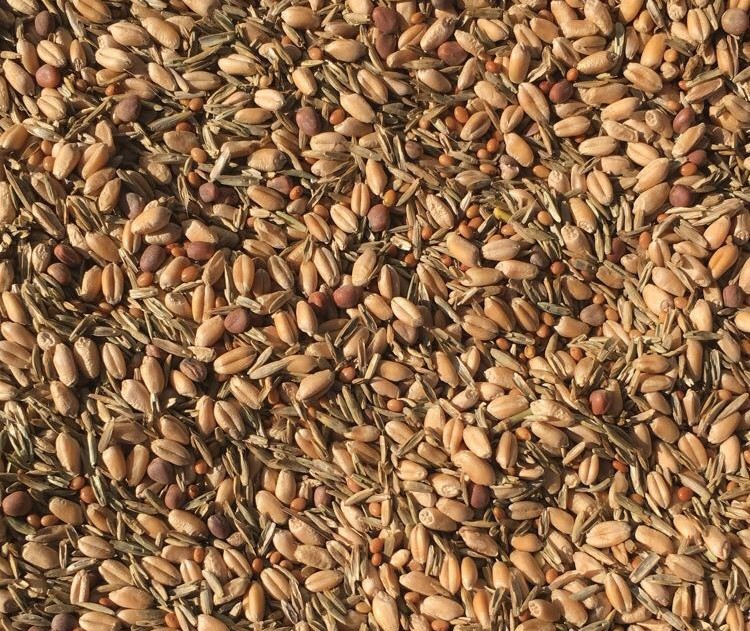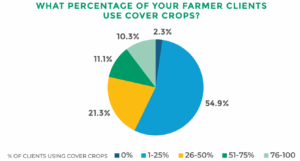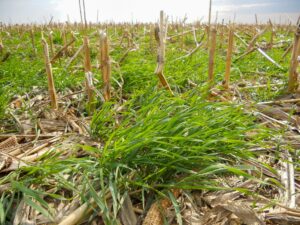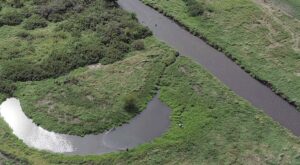By: 4R Plus
February 2021

Sheila Fisher grew up working on her family’s crop and livestock farm in Washington County. When her grandfather decided to retire from the farm in 2013, he offered Sheila the opportunity to buy his half of the hogs. She had just graduated from the University of Northern Iowa, so instead of putting her mathematics degree to work teaching, she went into business farming with her father. Within several years, her grandfather decided to sell his farm ground to Sheila and her father.
While her father and grandfather started no-tilling before Fisher returned to the farm, she quickly went to work experimenting with other 4R Plus management practices. According to Fisher, “We’d been hearing about the advantages of cover crops and thought there were some areas on the farm where we could benefit quite a bit – especially for nutrient storage and erosion control.
“Instead of those nutrients just going to waste, they’re taken up by the cover crop. When you terminate it, the next crop you’re trying to make money on can take advantage of those nutrients,” she said.
The Importance of Burndown Timing
Unfortunately, the first year they covered a majority of their acres in rye and learned the hard way that burndown timing is key. “We got hit with a carbon penalty because we didn’t always get the timing right between burndown and planting corn. We learned that we needed to focus more on termination timing to make sure the nitrogen is available at the right time.
“When we started, the recommendation was to kill your cover crop two weeks or more before you planted the field. Now the recommendation is to terminate after planting,” she added.
Using Cover Crops to Control Erosion

They also use cover crops to control erosion. “That’s a big one, and we’ve had really good luck with it. The residue helps keep the soil in place when we get those big rains, which helps prevent the seed from washing out too,” she said. “When we get a heavy rain, we can see the difference on neighbors’ fields that aren’t planted to cover crops – there’s a lot of standing water in low areas. On our fields, the water infiltrates through the soil a lot faster. Our soils also hold moisture better.”
Fisher added that a cover crop helps keep hog manure in place, which they normally apply in the fall. “So we’re helping protect water quality too,” she added.
They also target tighter soils. “We want to loosen up that soil,” she explained. “Then in the spring if it rains a lot, the water can infiltrate down through the ground better.”
A couple years ago, they experimented with a cover crop mix that included radishes. “The radishes really stood out because they have such a big root system,” she added.
Improved Weed Control: A Happy Accident
Another advantage: improved weed control. This discovery was a happy accident. “We had about 25 acres of cover crop that got a lot taller than we anticipated. It was probably 2.5 feet to 3 feet tall by the time I sprayed. Yet we saw great weed control on those acres,” she said. “So weather permitting, we plan to plant cover crops earlier and let them get taller before burndown. Better weed control means we save money on herbicides.”
Asked for her advice to farmers interested in experimenting with cover crops, Fisher said, “I’d start with areas where your soil is really tight and areas where there’s heavy erosion. Give it a try on 25% to 50% of your acres.”
There are state, federal and other financial assistance programs available for implementing 4R Plus practices. Click here to learn more or visit your local USDA service center.



